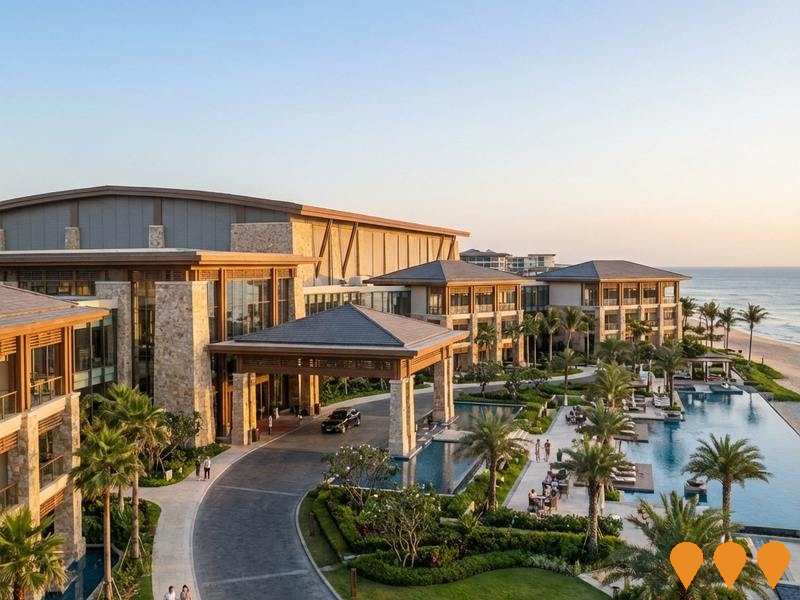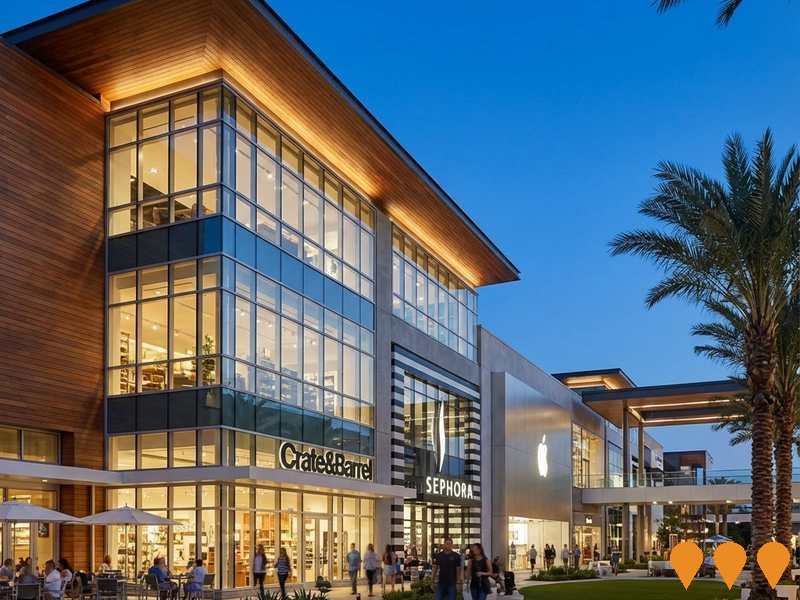Chart Color Schemes
est. as @ -- *
ABS ERP | -- people | --
2021 Census | -- people
Sales Activity
Curious about local property values? Filter the chart to assess the volume and appreciation (including resales) trends and regional comparisons, or scroll to the map below view this information at an individual property level.
Find a Recent Sale
Sales Detail
Population
Bracken Ridge is positioned among the lower quartile of areas assessed nationally for population growth based on AreaSearch's assessment of recent, and medium term trends
Bracken Ridge's population was approximately 18,753 as of August 2025. This figure represents an increase of 1,265 people, a 7.2% rise since the 2021 Census which reported a population of 17,488. The change is inferred from ABS's estimated resident population of 18,625 in June 2024 and an additional 165 validated new addresses since the Census date. This results in a population density ratio of 2,312 persons per square kilometer, placing Bracken Ridge in the upper quartile relative to national locations assessed by AreaSearch. The area's 7.2% growth since the 2021 census exceeded the SA3 area's 6.8%, indicating it as a growth leader in the region. Overseas migration contributed approximately 55.0% of overall population gains during recent periods, primarily driving population growth.
AreaSearch adopts ABS/Geoscience Australia projections for each SA2 area, released in 2024 with 2022 as the base year. For areas not covered by this data and years post-2032, Queensland State Government's SA2 area projections are used, released in 2023 based on 2021 data. However, these state projections do not provide age category splits; thus, AreaSearch applies proportional growth weightings in line with ABS Greater Capital Region projections for each age cohort, released in 2023 based on 2022 data. Looking ahead, national areas are anticipated to experience lower quartile growth. Based on the latest population numbers, Bracken Ridge is expected to grow by 545 persons to 2041, recording a total gain of 2.2% over the 17 years.
Frequently Asked Questions - Population
Development
Recent residential development output has been above average within Bracken Ridge when compared nationally
Bracken Ridge has seen approximately 43 new homes approved annually. Over the past five financial years, from FY21 to FY25, around 216 homes were approved, with an additional 18 approved so far in FY26. On average, about 3.9 people moved to the area each year for every dwelling built during these five years.
This suggests supply is lagging demand, likely leading to heightened buyer competition and pricing pressures. New properties are constructed at an average expected cost of $430,000, aligning with regional patterns. In FY26, approximately $14.7 million in commercial approvals have been registered, indicating balanced commercial development activity. Compared to Greater Brisbane, Bracken Ridge has about three-quarters the rate of new dwelling approvals per person and ranks among the 46th percentile nationally for areas assessed, offering more limited choices for buyers and supporting demand for existing dwellings. This is lower than national averages, reflecting market maturity and possible development constraints.
New building activity shows 57% detached houses and 43% attached dwellings, with an increasing blend of attached housing types offering choices across price ranges from spacious family homes to more affordable compact options. This shift represents decreasing availability of developable sites and reflects changing lifestyles and demand for diverse, affordable housing options. The location has approximately 375 people per dwelling approval, reflecting its established status. Population forecasts indicate Bracken Ridge will gain around 417 residents by 2041. With current construction levels, housing supply should meet demand adequately, creating favourable conditions for buyers and potentially enabling growth that exceeds current forecasts.
Frequently Asked Questions - Development
Infrastructure
Bracken Ridge has moderate levels of nearby infrastructure activity, ranking in the top 50% nationally
Twenty-four projects have been identified by AreaSearch as potentially impacting the area, with notable ones including Brendale Data Supernode, Fern Bracken Ridge Townhomes, Bracken Ridge Tavern Renovation and Extension, and Gateway Motorway, Bracken Ridge to Pine River Upgrade.
Professional plan users can use the search below to filter and access additional projects.
INFRASTRUCTURE SEARCH
 Denotes AI-based impression for illustrative purposes only, not to be taken as definitive under any circumstances. Please follow links and conduct other investigations from the project's source for actual imagery. Developers and project owners wishing us to use original imagery please Contact Us and we will do so.
Denotes AI-based impression for illustrative purposes only, not to be taken as definitive under any circumstances. Please follow links and conduct other investigations from the project's source for actual imagery. Developers and project owners wishing us to use original imagery please Contact Us and we will do so.
Frequently Asked Questions - Infrastructure
Bridgeman Downs Underground Rail Station (Concept)
Community-led concept for a new underground rail station in the Bridgeman Downs area, linked in local media to ideas for extra tracks between Strathpine and Albion. No official Brisbane City Council project listing or approval found as of 18 August 2025. Any progression would require formal feasibility, funding and assessment by the relevant authorities.

Brendale Data Supernode
A $2.5 billion green data storage facility and battery energy storage project on a 30-hectare site by Quinbrook Infrastructure Partners. Features advanced cloud computing infrastructure with up to 800MW power capacity, renewable energy systems, cutting-edge cooling technology, and 2,000MWh battery energy storage system. Expected to serve as a critical digital infrastructure hub for South East Queensland, connecting to international sub-sea cables via the Torus dark fibre network.
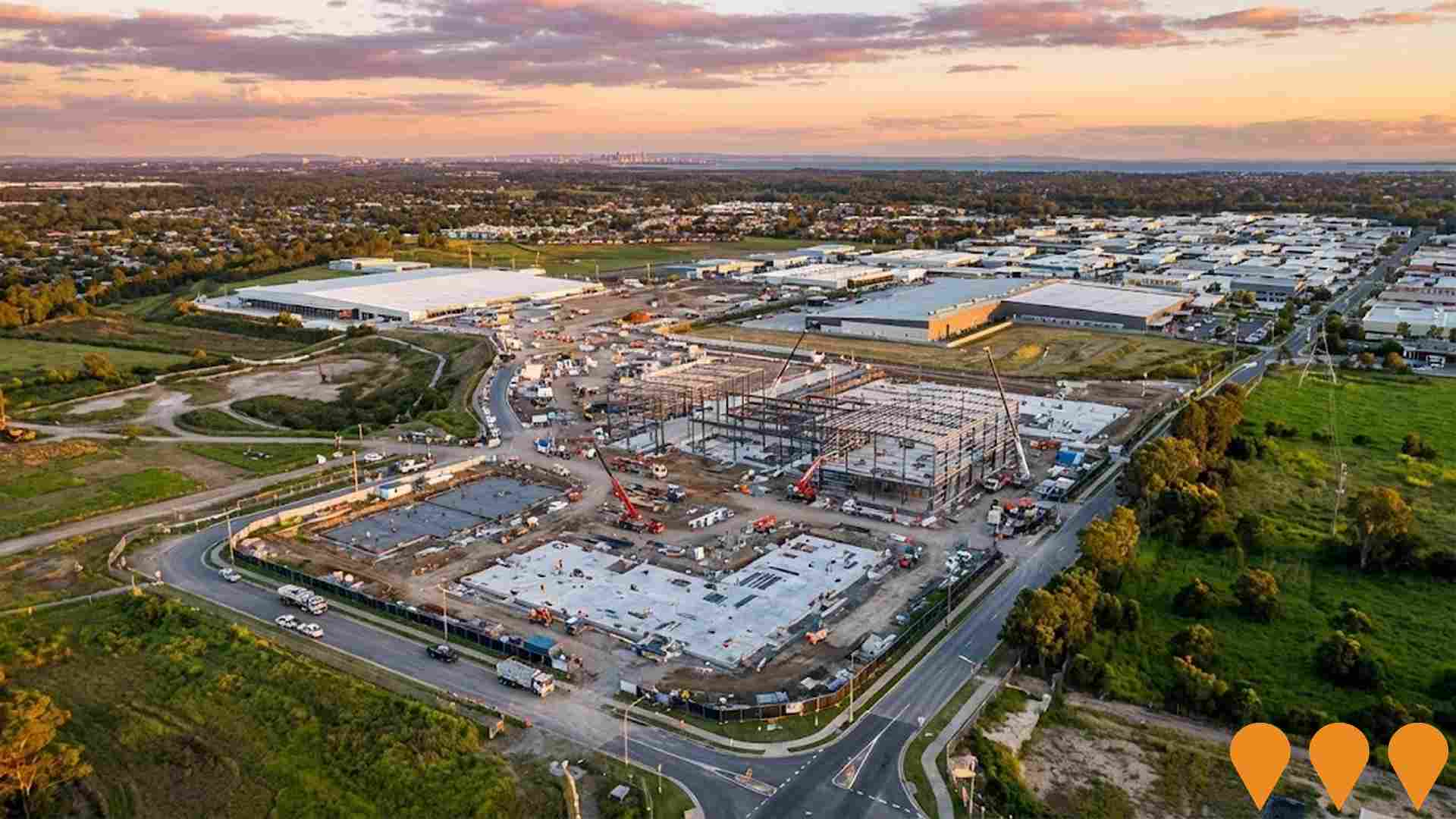
North West Transport Corridor
Integrated 9km transport corridor between Carseldine and Everton Park via Aspley area, preserved since the 1980s. $20 million business case study examining road, rail and active transport options to address growing congestion in northern Brisbane. Includes new arterial roads, public transport infrastructure, cycling and pedestrian paths. Various alignment options being considered including busway, rail, and tunnel solutions.
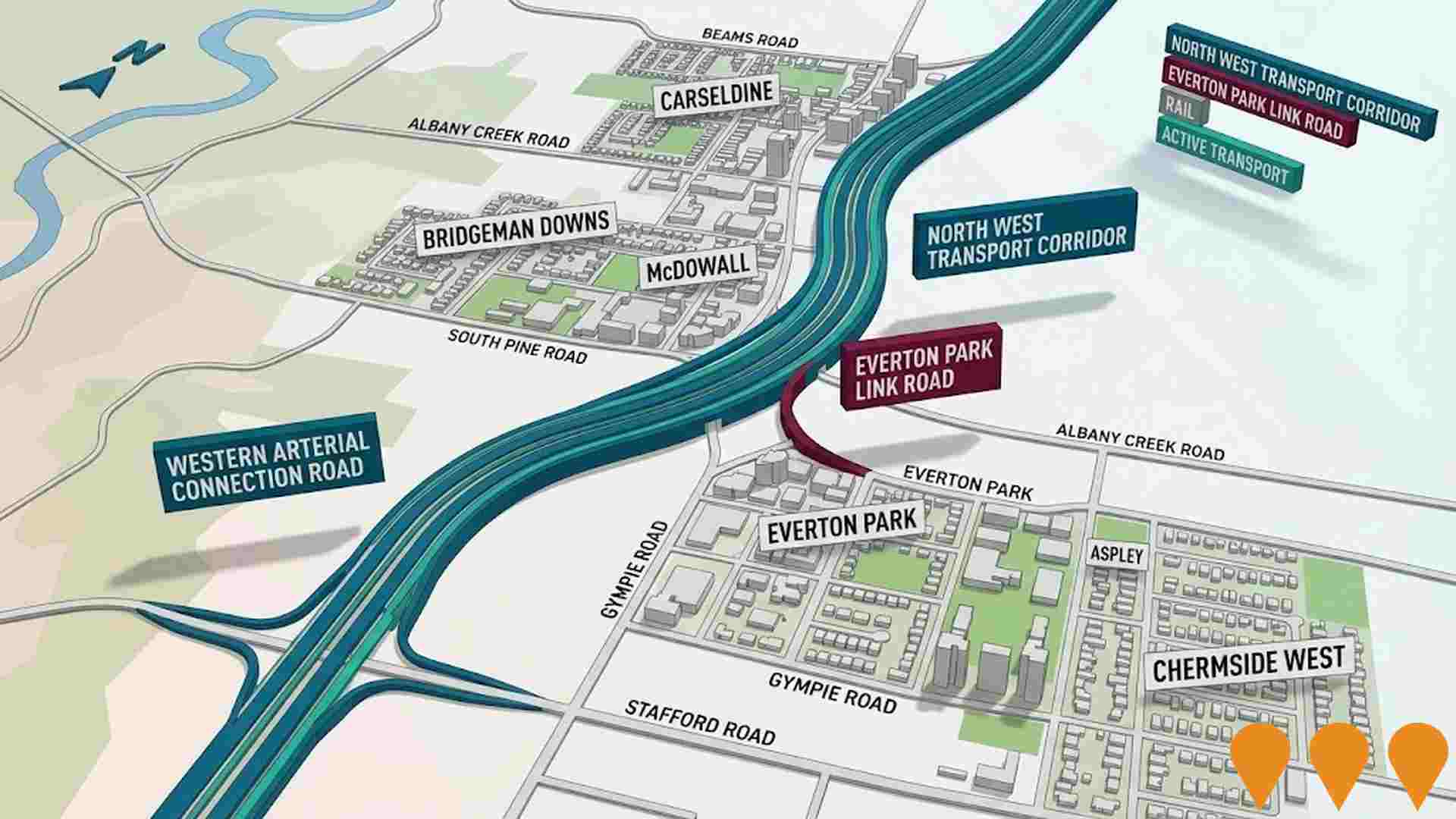
Linkfield Road Overpass Upgrade
Major $176 million upgrade of Linkfield Road Overpass at Bald Hills, increasing clearance height from 4.7m to 6m and upgrading to four lanes between Gympie Road and Lacey Road intersections. Includes new separated pathway for pedestrians and cyclists, plus on-road cycle lane. Part of Federal Government's $10 billion Bruce Highway investment.
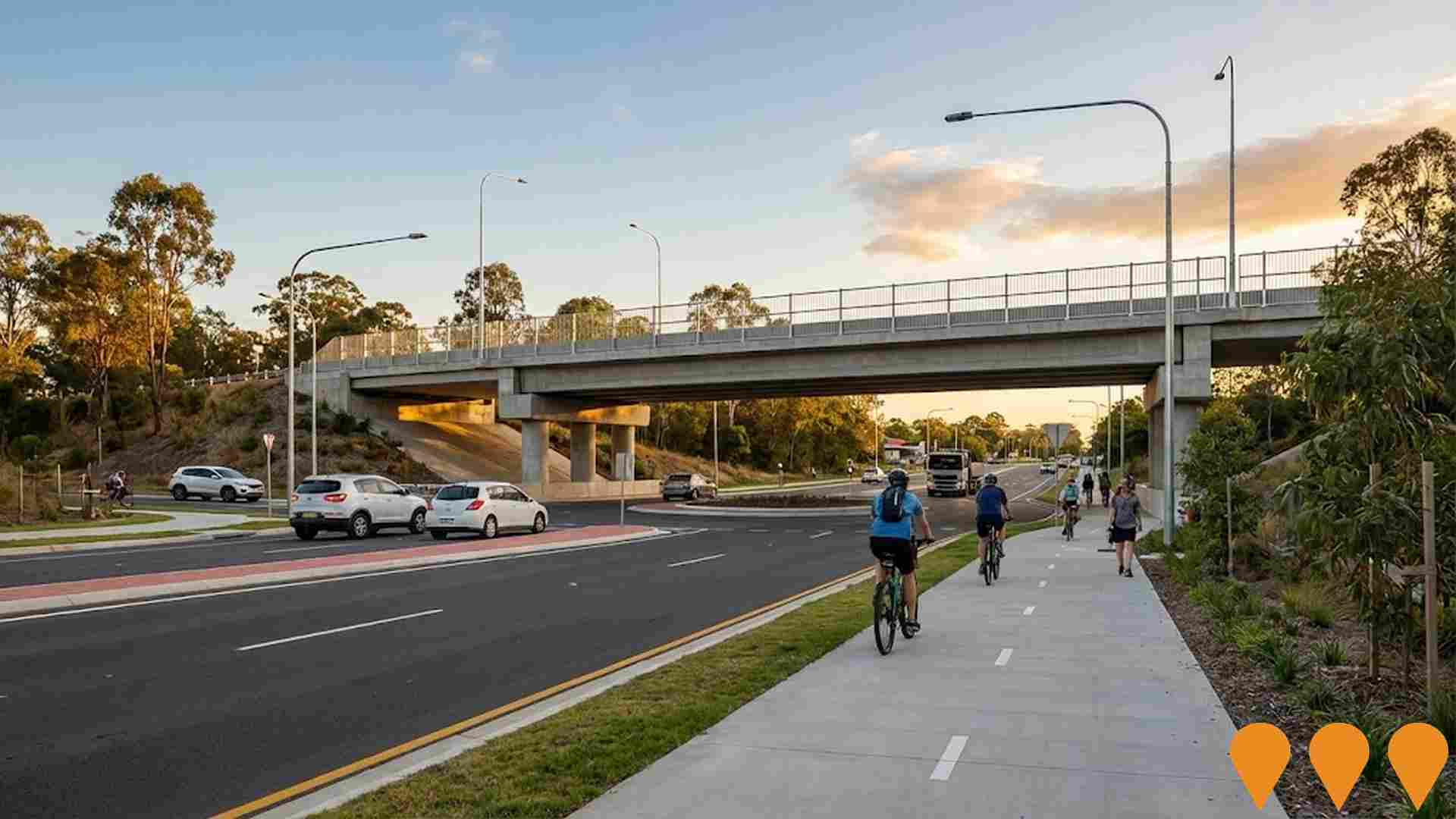
Gateway Motorway, Bracken Ridge to Pine River Upgrade
Upgrade of the Gateway Motorway between Bracken Ridge and the Pine River interchange to improve capacity, safety and network reliability. This section is being packaged and delivered with the Bruce Highway (Gateway Motorway to Dohles Rocks Road, Stage 1) as the Gateway to Bruce Upgrade (G2BU). TMR indicates procurement for a design-and-construct contractor is underway, with design activities preceding a construction start targeted from 2026.

Beams Road Upgrade Carseldine
Road upgrade and widening of Beams Road in Carseldine to improve traffic flow and safety. Project included intersection improvements and enhanced pedestrian and cycling facilities.

Lacey Road Childcare Centre
Single-storey childcare centre for 110 children at 272 Lacey Road, Bald Hills. Features 798 sqm GFA, 7 activity rooms, 2 large outdoor play areas, covered outside space, landscaping, and 22 car parking spaces. Includes subdivision to create separate lot from existing mosque. Designed by RealSpace Creative.
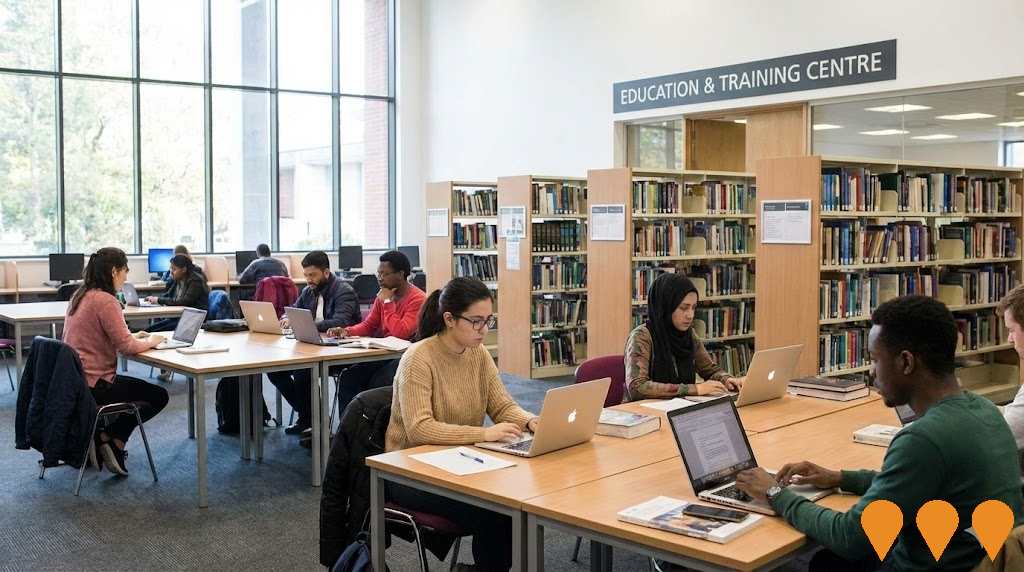
Lomandra Park Estate
6.4 hectare boutique residential community with display village featuring 8 luxury home designs. Premium land lots ranging from 400-600sqm in established leafy suburb. Quality family living with modern amenities.

Employment
Employment performance in Bracken Ridge has been broadly consistent with national averages
Bracken Ridge has a skilled workforce with notable representation in essential services sectors. Its unemployment rate was 4.5% as of June 2021, with an estimated employment growth of 11.1% over the past year.
As of June 2025, 10,416 residents are employed, with an unemployment rate of 4.9%, which is 0.8 percentage points higher than Greater Brisbane's rate of 4.1%. Workforce participation in Bracken Ridge is 66.6%, compared to Greater Brisbane's 64.5%. The leading employment industries among residents are health care & social assistance, retail trade, and construction.
However, professional & technical services have limited presence with only 6.5% of employment, compared to the regional average of 8.9%. The predominantly residential area appears to offer limited local employment opportunities, as indicated by the count of Census working population versus resident population. Between June 2024 and June 2025, employment in Bracken Ridge increased by 11.1%, while labour force increased by 10.6%, causing the unemployment rate to fall by 0.4 percentage points. In Greater Brisbane during the same period, employment grew by 4.4%, labour force expanded by 4.0%, and unemployment fell by 0.4 percentage points. Jobs and Skills Australia's national employment forecasts from May 2025 suggest that national employment is projected to expand by 6.6% over five years and 13.7% over ten years, with varying growth rates across industry sectors. Applying these projections to Bracken Ridge's employment mix suggests local growth of approximately 6.6%% over five years and 13.8% over ten years, based on a simple weighting extrapolation for illustrative purposes.
Frequently Asked Questions - Employment
Income
Income analysis reveals strong economic positioning, with the area outperforming 60% of locations assessed nationally by AreaSearch
Bracken Ridge has a median taxpayer income of $56,734 and an average income of $67,892, based on the latest postcode level ATO data aggregated by AreaSearch for the financial year 2022. This is higher than the national average, compared to Greater Brisbane's median income of $55,645 and average income of $70,520. By September 2025, based on a Wage Price Index growth of 13.99%, estimated incomes would be approximately $64,671 (median) and $77,390 (average). According to census data, incomes in Bracken Ridge cluster around the 60th percentile nationally. The largest income bracket comprises 38.0% earning between $1,500 and $2,999 weekly, with a total of 7,126 residents falling into this category, similar to the surrounding region where 33.3% occupy this bracket. After housing expenses, 85.3% of income remains for other expenses. The area's SEIFA income ranking places it in the 5th decile.
Frequently Asked Questions - Income
Housing
Bracken Ridge is characterized by a predominantly suburban housing profile, with above-average rates of outright home ownership
Dwelling structure in Bracken Ridge, as evaluated at the latest Census held on 28 August 2016, comprised 88.3% houses and 11.7% other dwellings. This compares to Brisbane metropolitan area's figures of 75.4% houses and 24.7% other dwellings. Home ownership in Bracken Ridge stood at 30.0%, with the remaining dwellings either mortgaged (45.4%) or rented (24.5%). The median monthly mortgage repayment in the area was $1,800, aligning with Brisbane metro's average. The median weekly rent figure was recorded as $410, compared to Brisbane metro's $375 and national figures of $1,863 for mortgage repayments and $375 for rents.
Frequently Asked Questions - Housing
Household Composition
Bracken Ridge features high concentrations of family households, with a higher-than-average median household size
Family households constitute 80.7% of all households, including 38.9% couples with children, 26.7% couples without children, and 13.7% single parent families. Non-family households comprise the remaining 19.3%, with lone person households at 16.3% and group households comprising 3.0%. The median household size is 2.8 people, larger than the Greater Brisbane average of 2.5.
Frequently Asked Questions - Households
Local Schools & Education
Bracken Ridge performs slightly above the national average for education, showing competitive qualification levels and steady academic outcomes
The area has university qualification rates of 23.5%, significantly lower than the SA4 region average of 33.8%. This presents both a challenge and an opportunity for targeted educational initiatives. Bachelor degrees are the most common at 16.9%, followed by postgraduate qualifications (4.2%) and graduate diplomas (2.4%). Trade and technical skills are prominent, with 38.1% of residents aged 15+ holding vocational credentials – advanced diplomas (12.6%) and certificates (25.5%).
Educational participation is high at 29.3%, including 10.3% in primary education, 8.5% in secondary education, and 4.6% pursuing tertiary education. There are six schools operating within Bracken Ridge educating approximately 2,921 students, with typical Australian school conditions (ICSEA: 1020) offering balanced educational opportunities. Educational provision is conventional, split between three primary and three secondary institutions. Note: where schools show 'n/a' for enrolments, please refer to the parent campus.
Frequently Asked Questions - Education
Schools Detail
Nearby Services & Amenities
Transport
Transport servicing is low compared to other areas nationally based on assessment of service frequency, route connectivity and accessibility
Bracken Ridge has 76 active public transport stops, all of which are bus stops. These stops are served by seven different routes that together provide 903 weekly passenger trips. The accessibility of these services is rated as good, with residents typically living just 219 meters away from the nearest stop.
On average, there are 129 trips per day across all routes, which works out to about 11 weekly trips per individual stop.
Frequently Asked Questions - Transport
Transport Stops Detail
Health
Bracken Ridge's residents are healthier than average in comparison to broader Australia with prevalence of common health conditions quite low among the general population though higher than the nation's average across older, at risk cohorts
Bracken Ridge's health data shows a relatively positive picture.
The prevalence of common health conditions among its residents is quite low compared to the general population but higher than the national average for older, at-risk cohorts. Approximately 53% (around 10,014 people) have private health cover, which is fairly high. Mental health issues and asthma are the most prevalent medical conditions in the area, affecting 8.3 and 7.8% of residents respectively. About 69.3% of residents claim to be completely free from medical ailments, compared to 67.8% across Greater Brisbane. As of 2016 (the latest available data), 16.7% of Bracken Ridge's population is aged 65 and over (3,139 people), which is lower than the 18.5% in Greater Brisbane. While health outcomes among seniors require more attention than the broader population, overall, the area's health profile presents fewer challenges compared to its peers.
Frequently Asked Questions - Health
Cultural Diversity
Bracken Ridge was found to be more culturally diverse than the vast majority of local markets in Australia, upon assessment of a range of language and cultural background related metrics
Bracken Ridge had a higher cultural diversity than most local areas, with 25.9% of its residents born overseas and 17.7% speaking a language other than English at home. Christianity was the predominant religion in Bracken Ridge, accounting for 54.7% of the population. Notably, the 'Other' religious category comprised 2.8% of Bracken Ridge's population, compared to 3.7% across Greater Brisbane.
In terms of ancestry, the top three groups were English (26.5%), Australian (24.4%), and Other (9.5%). There were significant differences in the representation of certain ethnic groups: New Zealanders made up 1.1% of Bracken Ridge's population compared to 1.1% regionally, Maori comprised 1.1% versus 0.9%, and Samoans accounted for 0.7% compared to 0.6%.
Frequently Asked Questions - Diversity
Age
Bracken Ridge's population is slightly younger than the national pattern
At age 37 years, Bracken Ridge's median age is nearly matching Greater Brisbane's average of 36 years while also being very close to Australia's median of 38 years. Compared to Greater Brisbane, Bracken Ridge has a higher proportion of residents aged 55-64 (11.4%) but fewer residents aged 25-34 (12.0%). Between the censuses of 2021 and 2026, the percentage of residents aged 75 to 84 grew from 4.6% to 6.2%. Conversely, the proportion of residents aged 25 to 34 declined from 13.3% to 12.0%. By 2041, demographic modeling suggests Bracken Ridge's age profile will evolve significantly. The cohort aged 85 and above is projected to grow by 164%, adding 538 residents to reach a total of 867. Residents aged 65 and above are expected to drive 71% of population growth, highlighting demographic aging trends. Meanwhile, the cohorts aged 0-4 and 5-14 are projected to experience population declines.
